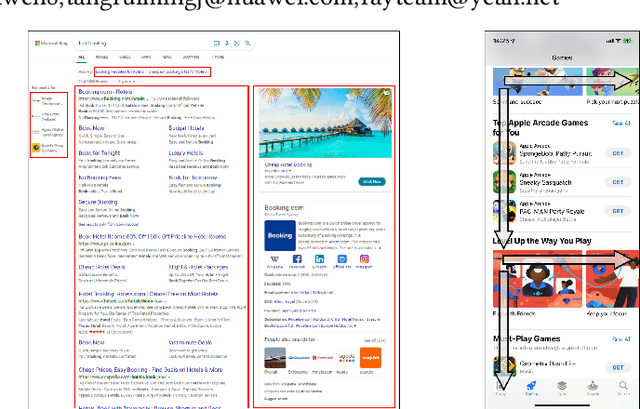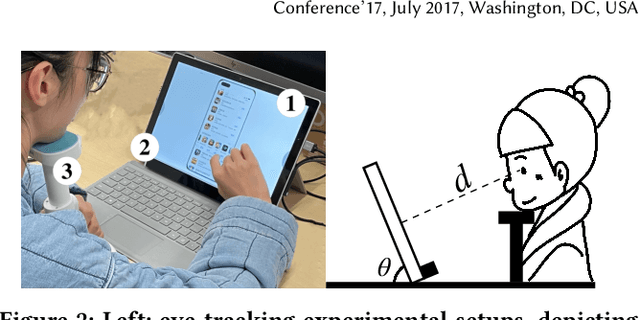An F-shape Click Model for Information Retrieval on Multi-block Mobile Pages
Paper and Code
Jun 17, 2022



To provide click simulation or relevance estimation based on users' implicit interaction feedback, click models have been much studied during recent years. Most click models focus on user behaviors towards a single list. However, with the development of user interface (UI) design, the layout of displayed items on a result page tends to be multi-block (i.e., multi-list) style instead of a single list, which requires different assumptions to model user behaviors more accurately. There exist click models for multi-block pages in desktop contexts, but they cannot be directly applied to mobile scenarios due to different interaction manners, result types and especially multi-block presentation styles. In particular, multi-block mobile pages can normally be decomposed into interleavings of basic vertical blocks and horizontal blocks, thus resulting in typically F-shape forms. To mitigate gaps between desktop and mobile contexts for multi-block pages, we conduct a user eye-tracking study, and identify users' sequential browsing, block skip and comparison patterns on F-shape pages. These findings lead to the design of a novel F-shape Click Model (FSCM), which serves as a general solution to multi-block mobile pages. Firstly, we construct a directed acyclic graph (DAG) for each page, where each item is regarded as a vertex and each edge indicates the user's possible examination flow. Secondly, we propose DAG-structured GRUs and a comparison module to model users' sequential (sequential browsing, block skip) and non-sequential (comparison) behaviors respectively. Finally, we combine GRU states and comparison patterns to perform user click predictions. Experiments on a large-scale real-world dataset validate the effectiveness of FSCM on user behavior predictions compared with baseline models.
 Add to Chrome
Add to Chrome Add to Firefox
Add to Firefox Add to Edge
Add to Edge